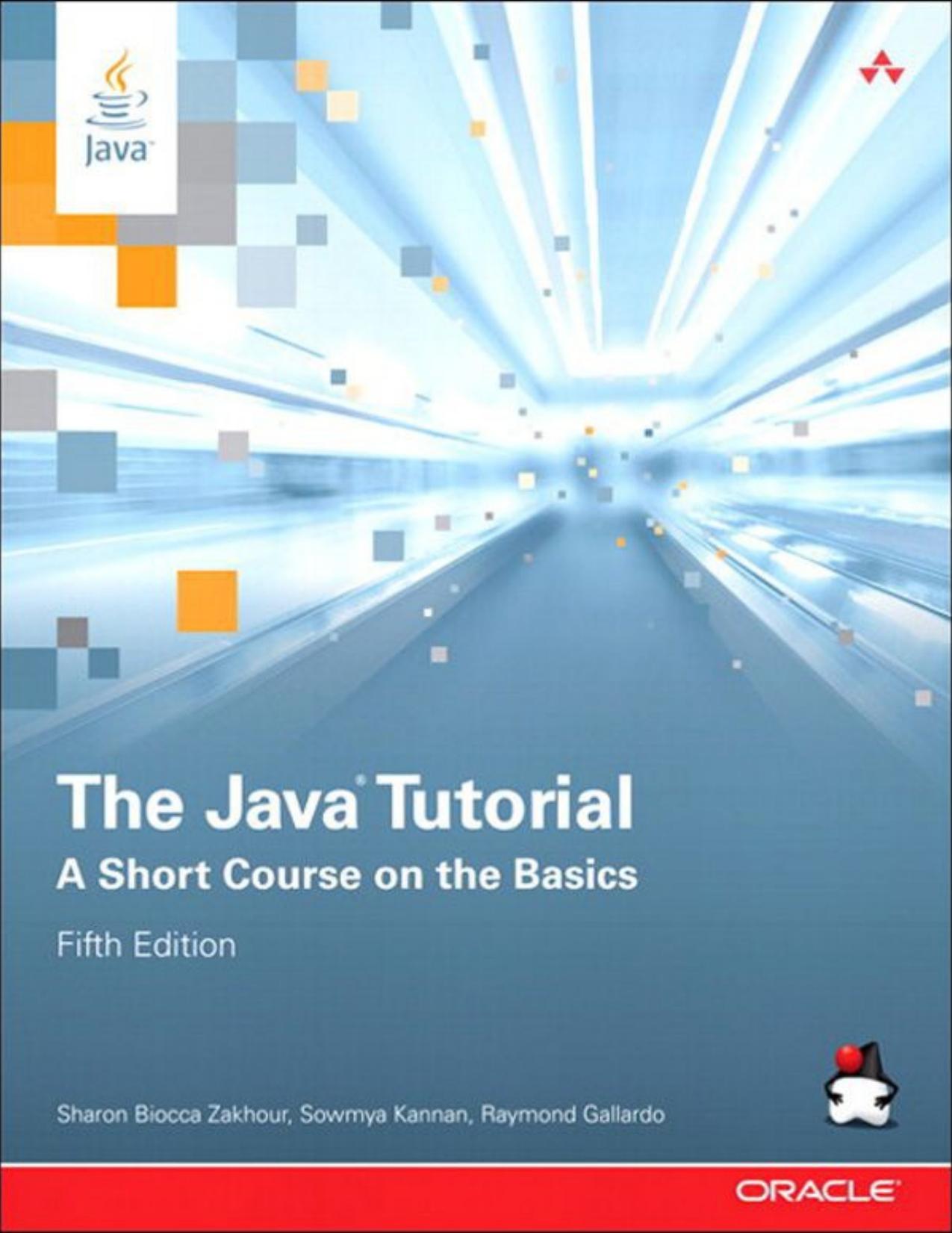The Java Tutorial: A Short Course on the Basics (5th Edition) (Java Series) by Zakhour Sharon Biocca & Kannan Sowmya & Gallardo Raymond

Author:Zakhour, Sharon Biocca & Kannan, Sowmya & Gallardo, Raymond [Zakhour, Sharon Biocca]
Language: eng
Format: epub, pdf
Publisher: Pearson Education
Published: 2013-02-27T00:00:00+00:00
Benefits of the Java Collections Framework
The Java Collections Framework provides the following benefits:
• Reduced programming effort. By providing useful data structures and algorithms, the collections framework frees you to concentrate on the important parts of your program rather than on the low-level “plumbing” required to make it work. By facilitating interoperability among unrelated APIs, the Java Collections Framework frees you from writing adapter objects or conversion code to connect APIs.
• Increased program speed and quality. This collections framework provides high-performance, high-quality implementations of useful data structures and algorithms. The various implementations of each interface are interchangeable, so programs can be easily tuned by switching collection implementations. Because you’re free from the drudgery of writing your own data structures, you’ll have more time to devote to improving programs’ quality and performance.
• Interoperability among unrelated APIs. The collection interfaces are the vernacular by which APIs pass collections back and forth. If a preexisting network administration API furnishes a collection of node names and your graphical user interface (GUI) toolkit expects a collection of column headings, the two APIs will interoperate seamlessly, even though they were written independently.
• Reduced effort to learn and to use new APIs. Many APIs naturally take collections on input and furnish them as output. In the past, each such API had a small sub-API devoted to manipulating its collections. There was little consistency among these ad hoc collection sub-APIs, so you had to learn each one from scratch, and it was easy to make mistakes when using them. With the advent of standard collection interfaces, the problem went away.
• Reduced effort to design new APIs. This is the flip side of the previous advantage. Designers and implementers don’t have to reinvent the wheel each time they create an API that relies on collections; instead, they can use standard collection interfaces.
• Increased software reuse. New data structures that conform to the standard collection interfaces are by nature reusable. The same goes for new algorithms that operate on objects that implement these interfaces.
Download
The Java Tutorial: A Short Course on the Basics (5th Edition) (Java Series) by Zakhour Sharon Biocca & Kannan Sowmya & Gallardo Raymond.pdf
This site does not store any files on its server. We only index and link to content provided by other sites. Please contact the content providers to delete copyright contents if any and email us, we'll remove relevant links or contents immediately.
Hello! Python by Anthony Briggs(10121)
The Mikado Method by Ola Ellnestam Daniel Brolund(10013)
OCA Java SE 8 Programmer I Certification Guide by Mala Gupta(9980)
Algorithms of the Intelligent Web by Haralambos Marmanis;Dmitry Babenko(8522)
Sass and Compass in Action by Wynn Netherland Nathan Weizenbaum Chris Eppstein Brandon Mathis(7915)
Grails in Action by Glen Smith Peter Ledbrook(7882)
Test-Driven iOS Development with Swift 4 by Dominik Hauser(7853)
The Well-Grounded Java Developer by Benjamin J. Evans Martijn Verburg(7770)
Windows APT Warfare by Sheng-Hao Ma(7487)
Layered Design for Ruby on Rails Applications by Vladimir Dementyev(7241)
Blueprints Visual Scripting for Unreal Engine 5 - Third Edition by Marcos Romero & Brenden Sewell(7126)
Secrets of the JavaScript Ninja by John Resig Bear Bibeault(6641)
Kotlin in Action by Dmitry Jemerov(5299)
Hands-On Full-Stack Web Development with GraphQL and React by Sebastian Grebe(4384)
Solidity Programming Essentials by Ritesh Modi(4382)
WordPress Plugin Development Cookbook by Yannick Lefebvre(4195)
Functional Programming in JavaScript by Mantyla Dan(4124)
Unity 3D Game Development by Anthony Davis & Travis Baptiste & Russell Craig & Ryan Stunkel(4110)
The Ultimate iOS Interview Playbook by Avi Tsadok(4078)
